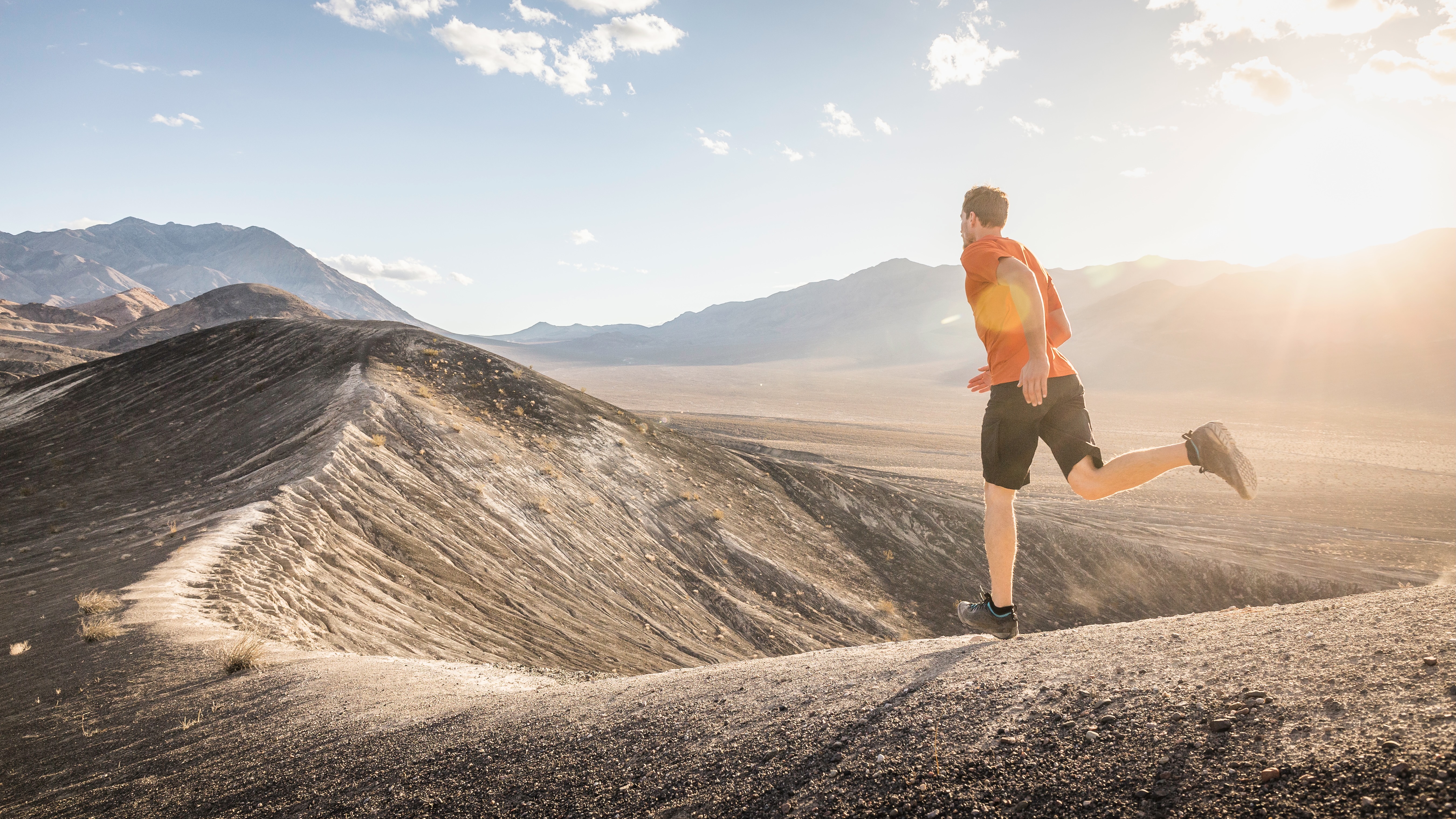How to run downhill (safely...and fast)
Learn how to run downhill by copying the top athletes and learning the best techniques for speedier descents on running trails and paths

We have all seen the top runners seemingly plummet effortlessly from the top of a mountain or hill to the base in no time at all. But how do they achieve such speed and look so relaxed?
When most people try to run downhill it feel slows, laborious, painful, and fraught with danger of tripping or slipping. But if you take part in races with hills and mountains, or you simply want to become more efficient when out for a long off-road run, learning to run fast downhill will be a big benefit.
The easier you can run downhill, the less taxing you will find the overall outing. Here are our expert tips to help you to be able to run more efficiently and smoothly downhill.
How to run faster downhill
Running downhill is good for you
It might feel like downhill running is painful and bad for your knees (see: Trail running injuries), but if you do it properly it can have benefits. Running down a slope should activate and engage stabilising muscles in and around the knee, which in turn will help to strengthen them. Stronger knees means more powerful running.
As well as physical advantages, there is a huge sense of freedom and joy that comes with being able to run more easily downhill and at speed.
Lean forwards
Advnture Newsletter
All the latest inspiration, tips and guides to help you plan your next Advnture!
Your natural instinct when running downhill is to lean back because you usually feel the need to slow down and put on a bit of a brake. However, leaning forwards is the best method for more efficient running downhill and it means you will not overly tire muscles.
Try to think hard about relaxing and learning forwards as you go. A good tip is to aim to align your shoulders in front of you with your knees and you run downhill.
Stride out
It can be tempting to shorten your stride when running downhill but longer strides are what the top athletes do. You will cover more ground more quickly and it’s easier to lean forward when taking longer steps.
Legs should be bent and you should try to push yourself forwards, leading with your chest, with each step, rather than letting gravity alone pull you down the hill.
More technical and steeper slopes will require a shorter, more accurate step to avoid injury so keep the long strides for the gentler gradients. Also watch how the experts take side steps, too, to maintain momentum and balance.
Land on your midfoot
The best runners head downhill with almost flat feet. It’s not a good idea to hit the ground with your forefoot or your heel. Hitting the middle of the fort gives the greatest balance and bounce and the best control.

More tips for running downhill on trails
Use your arms
To maintain balance and to aid the forward motion, use your arms like mini windmills by your side. The aim is to do small, rounded movements with your hands and arms.
Look ahead
It is tempting to look at your feet the whole time, but you should be looking ahead and at least 10 metres/30 feet in front of you. If you do this your brain will be able to more easily assess what is coming on the trail or the hillside.
If you look down close to your feet you will be more likely to slough and this is not good for downhill speed. Look up and ahead.
Empty your mind
It’s fear and anxiety that will slow you down on descents. Trust your body’s capabilities and your instincts and simply let your worries go.
The right footwear
Running downhlll, especially on tracks, trails and hill paths requires the right trail running footwear. For more on this, check out our best mud running shoes and best trail running shoes, and our guide on how to choose trail running shoes.
With practice, the fine art of running downhill at speed should come to you.

Fiona Russell is a widely published adventure journalist and blogger, better known as Fiona Outdoors. She is based in Scotland and is an all-round outdoors enthusiast with favorite activities including trail running, mountain walking, mountain biking, road cycling, triathlon and skiing (both downhill and backcountry). Aside from her own adventures, Fiona's biggest aim is to inspire others to enjoy getting outside and exploring, especially through her writing. She is also rarely seen without a running skort! Find out more at Fiona Outdoors.
